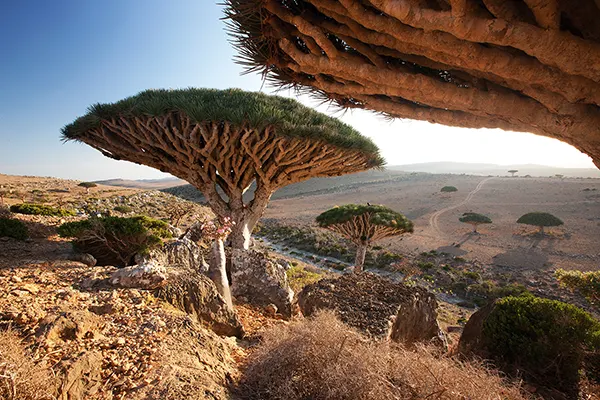
Socotra Island, Yemen: Alien Nature and Isolated Culture
Socotra Island, located in the Arabian Sea and part of the Republic of Yemen, is a destination of unparalleled biodiversity and cultural isolation. Separated from mainland Africa and the Arabian Peninsula for millions of years, it has developed unique ecosystems and preserved traditions rarely seen elsewhere. In February 2025, Socotra continues to fascinate biologists, anthropologists, and adventurous travellers alike for its otherworldly landscapes and rich cultural tapestry.
Unmatched Biodiversity in Isolation
Socotra is home to over 700 endemic species of flora and fauna, many of which cannot be found anywhere else on Earth. The island’s dragon blood tree (Dracaena cinnabari), with its umbrella-like canopy and crimson resin, is among the most iconic. Botanists estimate that approximately 37% of Socotra’s plant species are endemic, a direct result of its long geological isolation.
The island’s wildlife is equally unique, with a number of endemic birds such as the Socotra starling, Socotra warbler, and Socotra sunbird. Meanwhile, reptile life flourishes in this arid ecosystem, including species like the Socotran chameleon and a variety of geckos and skinks adapted to desert life.
Socotra’s marine life is another area of scientific interest. Coral reefs surrounding the island host over 250 species of reef-building corals and more than 300 species of fish. The isolation has allowed these ecosystems to evolve independently, creating a pristine environment largely untouched by industrialisation.
Environmental Challenges and Conservation
Despite its isolation, Socotra faces increasing environmental pressures. Climate change, unsustainable grazing, and invasive species have started to threaten the island’s unique biodiversity. For example, goats introduced by locals are impacting native plant life, particularly young dragon blood trees.
Efforts have been made to protect the ecosystem through initiatives like the Socotra Archipelago UNESCO World Heritage designation, granted in 2008. This recognition has helped attract international attention and support for conservation efforts, but infrastructure and funding remain challenges.
Local and global collaboration is essential. NGOs working with Socotri communities aim to integrate traditional knowledge into conservation practices, supporting sustainable agriculture and ecosystem monitoring. These actions are critical to preserving Socotra’s biological heritage.
A Culture Untouched by Time
Socotra’s inhabitants, numbering around 60,000, speak the ancient Semitic Socotri language, which remains unwritten and distinct from Arabic. This linguistic uniqueness adds to the island’s cultural significance and reinforces its image as a living time capsule.
Socotri culture is deeply tied to nature. Traditional livelihoods revolve around fishing, herding, and the harvesting of frankincense and dragon blood resin. The latter has both economic and ritual significance, used in traditional medicine and as a dye in local ceremonies.
Oral storytelling, poetry, and song are core cultural pillars. Many families pass down knowledge through spoken word, which scholars are now attempting to document before it fades. This rich oral tradition preserves Socotra’s history, myths, and social codes in ways written records cannot.
Preserving Cultural Identity
Modern influences are gradually reaching Socotra, especially with the expansion of telecommunications and limited tourism. While development brings opportunities, it also poses a threat to traditional lifestyles and language continuity.
Socotri cultural preservation projects, led by linguists and local leaders, are working to document and potentially formalise the Socotri language. These efforts are vital for educational inclusion and cultural resilience amid growing external influences.
Community-led initiatives are also focusing on maintaining traditional crafts and knowledge. These programmes empower local artisans and promote economic sustainability through eco-cultural tourism, which respects and celebrates the island’s heritage.
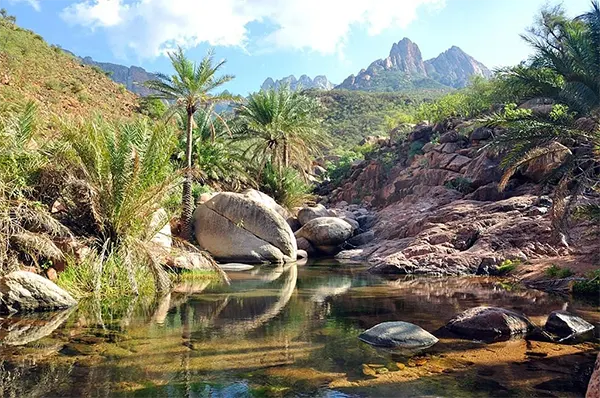
Eco-Tourism and Access in 2025
In February 2025, visiting Socotra remains logistically challenging but increasingly feasible. Limited charter flights operate from Cairo and Aden, and infrastructure remains basic but functional. There are no luxury resorts — instead, visitors stay in eco-lodges or local guesthouses, reflecting the island’s low-impact tourism approach.
Socotra’s tourism policy focuses on quality over quantity. The Yemeni government and environmental bodies strictly regulate visitor numbers to minimise ecological disruption. Travellers are encouraged to respect local customs, avoid plastic waste, and follow leave-no-trace principles during hikes and snorkelling activities.
The most popular tourist spots include the Diksam Plateau with its forests of dragon blood trees, the sand dunes of Arher Beach, and the Detwah Lagoon — a stunning marine reserve. Guided treks, cave explorations, and birdwatching tours provide immersive ways to experience the island’s natural wonders.
Looking Ahead: Sustainability in Focus
Future development plans for Socotra hinge on sustainable principles. Both governmental and non-governmental stakeholders are working to enhance infrastructure without compromising the environment. Renewable energy projects and waste management improvements are under consideration.
Long-term tourism strategies aim to balance conservation with cultural and economic benefit. Ecotourism training for locals ensures that tourism revenue supports communities directly, while reducing the risk of cultural erosion or habitat destruction.
Socotra’s story in 2025 remains one of resilience and rarity. It stands as a reminder that isolation, while challenging, can preserve extraordinary biological and cultural diversity — provided it is nurtured with care and foresight.
Popular articles
-
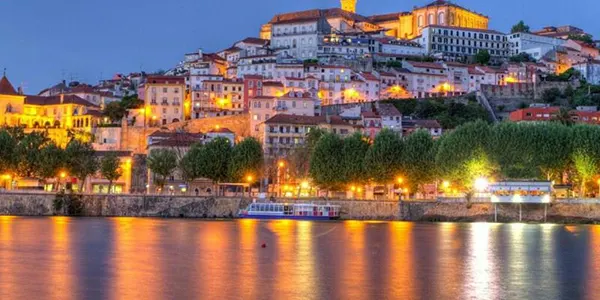 Coimbra, Portugal — A Student City Shaped by Centuries of Academic Tra...
Coimbra, Portugal — A Student City Shaped by Centuries of Academic Tra...Coimbra stands as one of Portugal’s most influential cultural and …
-
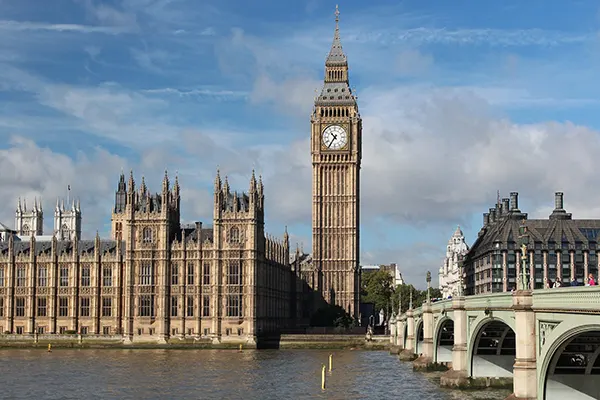 Big Ben and the Elizabeth Tower in London: History, Restoration, and V...
Big Ben and the Elizabeth Tower in London: History, Restoration, and V...Few landmarks define London’s identity as powerfully as Big Ben …
-
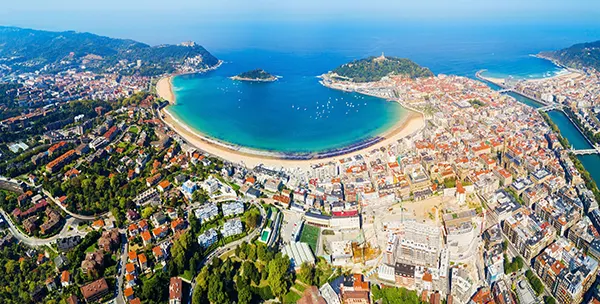 San Sebastián, Spain — The Gastronomic Capital of Europe on the Bay of...
San Sebastián, Spain — The Gastronomic Capital of Europe on the Bay of...San Sebastián, also known as Donostia in the Basque language, …
